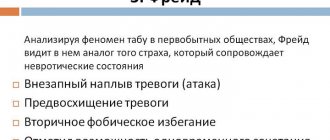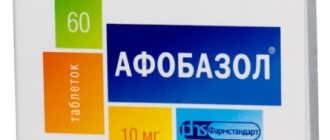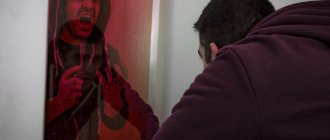Examinations and treatment
If epilepsy is suspected, the patient is thoroughly examined. First of all, the patient is examined by a neurologist and studies the history of the disease, including family history. The patient is prescribed the following tests:
- blood;
- fundus;
- X-ray of the skull;
- Dopplerographic study of cerebral arteries.
It is mandatory to visualize the structure, functions and biochemical characteristics of the brain using X-ray, computed tomography or magnetic resonance imaging (MRI). Hours of electroencephalography (EEG) are of great importance in diagnosing the disease.
Such laboratory studies are aimed at determining the true causes of the disease and excluding pathologies that can cause seizures, but are not associated with brain diseases.
The main effect on epilepsy is medications. The result of medical care in the treatment of pathology depends both on the correct selection of medications and on the patient’s compliance with all doctor’s recommendations. The principle of medical intervention is an individual approach to each patient, continuity and duration of treatment. Antiepileptic therapy will be effective if:
- early onset of exposure to the manifestation of characteristic symptoms with antiepileptic drugs;
- desire for monotherapy;
- the correct choice of medication for epilepsy, depending on the type of attacks of a particular patient;
- if necessary, introduction of a rational combination of polytherapy (if there is no effect from the use of one drug);
- prescribing appropriate medications in dosages that provide complete therapy;
- taking into account the pharmacokinetic and pharmacodynamic properties of prescribed drugs;
- monitoring the presence of antiepileptic drugs in the patient’s body.
Epilepsy medications cannot be stopped at once. They should be taken until complete relief from pathological manifestations is obtained. Only in cases of individual intolerance to the components of the drug, allergies, or in the event of side effects, gradual withdrawal of the drug is necessary. Doses of drugs for the treatment of epilepsy are gradually reduced. If the doctor decides that the therapy does not bring the desired result, then new medications are also gradually introduced.
How do anticonvulsants work?
The occurrence of seizures in epilepsy is the result of abnormal electrical activity of an area of the cerebral cortex: the epileptic focus. A decrease in the excitability of neurons in the epileptic focus and stabilization of the membrane potentials of these cells lead to a decrease in the number of spontaneous discharges and, accordingly, to a decrease in the number of seizures. This is the direction in which antiepileptic drugs are working.
There are three main mechanisms of action of anticonvulsants:
- stimulation of GABA receptors. GABA - gamma-aminobutyric acid - is an inhibitory neurotransmitter of the nervous system. Stimulation of its receptors leads to inhibition of neuronal activity;
- blockade of ion channels in the neuron membrane. The occurrence of an electrical discharge is associated with a change in the action potential of the cell membrane, and the latter occurs at a certain ratio of sodium, calcium, and potassium ions on both sides of the membrane. Changing the ion ratio leads to a decrease in epiactivity;
- a decrease in the amount of glutamate or blockade of its receptors in the synaptic cleft (at the site of transmission of electrical discharge from one neuron to another). Glutamate is a neurotransmitter with an excitatory type of action. Eliminating its effects allows you to localize the source of excitation, preventing it from spreading to the entire brain.
Each anticonvulsant drug may have one or more mechanisms of action. Side effects from the use of antiepileptic drugs are also associated with these mechanisms of action, since they do not realize their capabilities selectively, but, in fact, throughout the entire nervous system (and sometimes not only in it).
Original or generic
For the effectiveness of epilepsy therapy, the fact of which drug is used is of great importance - a generic or the original of the latest generation?
As the name implies, the original is a new generation product, which was patented by a pharmaceutical manufacturing company and has passed all the necessary laboratory and clinical studies.
In turn, a generic is a so-called analogue, a cheaper drug with a similar active substance, but from a different manufacturer.
It should be noted that the basic production technologies and composition of auxiliary components of a generic drug may differ significantly from the original.
For the treatment of epilepsy, it is best to use branded, original medications. But many patients ask to replace original medications with generics - most often this is due to lower cost.
But in this case, it is necessary to adjust the dose of the drug; in most cases it is increased.
In addition, when using analogues, the frequency of side effects increases significantly, which also cannot but affect a person’s well-being. Therefore, the choice of medication against epilepsy rests solely with the treating specialist.
How are anticonvulsants used?
Polytherapy is prescribed in rare cases due to the risks of several side effects. Toxic effects can affect health in different ways, so before procedures you need to be regularly examined by a specialist.
Correctly selected treatment does not cause side effects and makes the quality of life noticeably better. The main condition for achieving a lasting therapeutic effect is long-term and regular use of drugs. In some situations, therapy should never be stopped.
The effectiveness of therapy should be judged several years after the start of use. If you want to replace the product, you will have to consult a specialist. The peculiarities of the effects of medications on the body necessitate a gradual reduction in dosage when stopping use.
Anticonvulsants are allowed to be used by children; the dose and pattern of use are determined by a specialist. It is not advisable to take pills during the first trimester of pregnancy. As an exception, we can consider a situation where the health condition worsens.
Causes of epilepsy
As mentioned above, epilepsy is divided into 2 main types: Idiopathic and symptomatic. Idiopathic epilepsy is most often generalized, and symptomatic epilepsy is partial. This is due to various reasons for their occurrence. In the nervous system, signals are transmitted from one nerve cell to another using an electrical impulse that is generated on the surface of each cell. Sometimes unnecessary excess impulses arise, but in a normally functioning brain they are neutralized by special anti-epileptic structures. Idiopathic generalized epilepsy develops as a result of a genetic defect in these structures. In this case, the brain cannot cope with the excessive electrical excitability of the cells, and it manifests itself in convulsive readiness, which can at any moment “capture” the cortex of both hemispheres of the brain and cause an attack.
In partial epilepsy, a focus with epileptic nerve cells is formed in one of the hemispheres. These cells generate excess electrical charge. In response to this, the remaining antiepileptic structures form a “protective wall” around such a focus. Up to a certain point, convulsive activity can be restrained, but the climax comes, and epileptic discharges break through the boundaries of the shaft and manifest themselves in the form of the first attack. The next attack will most likely not be long in coming - because... The “path” has already been paved.
Such a focus with epileptic cells is most often formed against the background of some disease or pathological condition. Here are the main ones:
- Underdevelopment of brain structures - does not arise as a result of genetic rearrangements (as in idiopathic epilepsy), but during fetal maturation, and can be seen on MRI;
- Brain tumors;
- Consequences of stroke;
- Chronic alcohol use;
- Infections of the central nervous system (encephalitis, meninoencephalitis, brain abscess);
- Traumatic brain injuries;
- Drug addiction (especially amphetamines, cocaine, ephedrine);
- Taking certain medications (antidepressants, antipsychotics, antibiotics, bronchodilators);
- Some hereditary metabolic diseases;
- Antiphospholipid syndrome;
- Multiple sclerosis.
Factors in the development of epilepsy
It happens that the genetic defect does not manifest itself in the form of idiopathic epilepsy and the person lives without the disease. But when “fertile” soil arises (one of the above diseases or conditions), one of the forms of symptomatic epilepsy may develop. In this case, epilepsy is more likely to develop in young people after traumatic brain injury and alcohol or drug abuse, and in older people - due to brain tumors or after a stroke.
Drug groups
Achieving optimal results in the treatment of epilepsy is largely determined by the correct calculation of the dose and duration of treatment. Depending on the symptomatic manifestations, the names of recommended drugs may belong to different groups of drugs:
Anticonvulsants. Drugs belonging to this group of drugs help relax muscle tissue. They are often recommended for the treatment of various forms of epilepsy. Such drugs can be prescribed to both adults and children in the presence of tonic-clonic and myoclonic seizures. Tranquilizers. The purpose of drugs in this group is to relieve or suppress nervous excitability. They help in the fight against the manifestations of petit mal seizures
However, such drugs are used with caution, since at the beginning of use they can aggravate the severity of the disease. Sedatives. Not all epileptic seizures end well
Often, immediately before or after a seizure, the patient falls into severe depressive states, becomes irritable or aggressive. Sedatives in combination with a visit to a psychotherapist can calm and relieve such symptoms. Injections. Used for twilight states and affective disorders. Injections of nootropic drugs (Actovegin, Cerebrolysin, etc.) have proven themselves well as a means to alleviate and localize some symptoms of neurological disorders.
Main objectives of treatment
Complex therapy for epilepsy is primarily aimed at reducing its symptoms and the number of seizures and their duration. Treatment of pathology has the following goals:
- Pain relief is necessary if seizures are accompanied by pain. For these purposes, painkillers and anticonvulsants are systematically taken. To alleviate the symptoms accompanying attacks, the patient is recommended to eat foods rich in calcium.
- Prevent new recurrent seizures with appropriate tablets.
- If subsequent attacks cannot be prevented, then the main goal of therapy is to reduce their number. Medicines are taken throughout the patient’s life.
- Reduce the intensity of seizures in the presence of severe symptoms with respiratory failure (its absence after 1 minute).
- Achieve a positive result followed by discontinuation of drug therapy without relapse.
- Reduce side effects and risks from the use of medications for epilepsy attacks.
- Protect those around you from the person who poses a real threat during a seizure. In this case, drug treatment and observation in a hospital setting are used.
The method of complex therapy is selected after a full examination of the patient, determining the type of epileptic seizures, the frequency of their recurrence and severity.
For these purposes, the doctor carries out a full diagnosis and sets priority treatment areas:
- exclusion of “provocateurs” that cause a seizure;
- neutralization of the causes of epilepsy, which are blocked only through surgery (hematoma, neoplasm);
- establishing the type and form of the disease using the global list of classification of pathological conditions;
- prescribing medications against certain epileptic seizures (monotherapy is preferred; in the absence of effectiveness, other drugs are prescribed).
Correctly prescribed medications for epilepsy help, if not eliminate the pathological condition, then control the course of seizures, their number and intensity.
List of anticonvulsant medications for children
"Carbamazepine". This antiepileptic drug from the category of iminosbenes has many advantages. It reduces pain in those who suffer from neuralgia. Reduces the frequency of attacks in epilepsy; after several days of taking the drug, there is a decrease in anxiety, a decrease in aggressiveness in adolescents and children. The medicine is absorbed quite slowly, but it acts completely and for a long time. The product is available in tablets. Carbamazepine is prescribed to children from 3 years of age.
"Zeptol." An antiepileptic drug such as iminostilbenes improves mood by suppressing the production of norepinephrine and dopamine and relieves pain. The drug is prescribed for epilepsy and trigeminal neuralgia. The drug is available in tablet form. Children can be given the medicine from the age of three.
"Valparine." Anticonvulsant medicine of the vaoproate group. The drug does not depress breathing, does not affect blood pressure, and has a moderate sedative effect. "Valparin" is prescribed for the treatment of epilepsy, for seizures associated with organic brain lesions, for febrile seizures (convulsions at high temperatures in children from birth to 6 years).
The drug is not recommended for children under three years of age. It is prescribed for children in tablets, and for babies whose body weight is less than 20 kilograms - in intravenous injections or droppers.
"Apilepsin". This anticonvulsant drug is prescribed not only for the treatment of epilepsy, but also for childhood tics, as well as for febrile seizures in children. The medicine is available in the form of drops for oral administration, tablets, dry substance for intravenous injections and droppers, and also in the form of syrup. Children under 3 years of age can take the medication in syrup. Starting from 3 years, other forms of the drug are allowed.
"Convulex". The anticonvulsant drug of the vaoproate group has a mild sedative effect and the ability to relax muscles. The drug allows you to cope with a wide range of seizures of various origins, from epileptic to febrile. In addition, Konvulex is prescribed to children who have bipolar disorders. Release forms are different - from dry substances for subsequent preparation of injections to capsules and tablets. The so-called “children’s” forms of the medicine are oral drops and syrup. Capsules and tablets are contraindicated in children under 3 years of age. They can only be given liquid forms of Convulex.
"Phenobarbital". This anticonvulsant belongs to the category of barbiturates. It depresses some areas of the cerebral cortex, including the respiratory center. Has a hypnotic effect. The drug will be prescribed to a child for the treatment of epilepsy, severe sleep disorders, spastic paralysis, and a number of seizures not associated with manifestations of epilepsy. Available in tablets. Can be prescribed to children from birth.
"Clonazepam." The brightest representative of the group of benzodiazepines. Approved for use in children of any age with epilepsy, nodule spasms, and atonic seizures. Available in tablets and solution for intravenous administration.
"Sibazon" is a tranquilizer with an anticonvulsant effect. May lower blood pressure. Used for muscle cramps of various origins. Available in tablets and solution for intravenous injection. It is used to relieve epileptic seizures and febrile convulsions in children from one year of age.
In addition, Antilepsin, Iktoril, Rivotril, Pufemid, Ronton, Etimal and Sereysky’s Mixture are effective against childhood seizures.
Medicines for minor seizures
Suxilep is used for mild convulsions during meals 3 times a day. First, drink ¼ tablet or 20 drops, gradually increase the dosage. The doctor determines the amount of medications used individually. It should not be used by women during pregnancy or with complex disorders of the kidneys, liver, blood vessels, or blood.
Trimethine is often used for seizures and should be taken with meals 3 times a day. The medicine has side effects: vomiting, dizziness, decreased appetite, drowsiness. Do not use during pregnancy or complex disorders of the kidneys, liver, or blood . Glycine is an excellent safe remedy, has a calming effect, stimulates brain function, and is prescribed for children under 3 years of age.
Why drug therapy may not be effective
Correctly selected treatment helps the patient forget about seizures. No effect occurs when:
- Low-quality (fake) medicine.
- Careless attitude of the patient, irregular taking of pills, unhealthy lifestyle (drinking alcohol, eating a diet rich in glucose, etc.)
- Incorrectly selected medicine. Epilepsy requires careful study. Finding the right treatment is not easy.
When epilepsy is caused by brain damage (trauma, tumor, etc.), it is not always possible to cope with the help of pills. The last resort is surgery. During surgery, surgeons remove the affected areas that are causing the attack. After this, the chance of complete remission is 80%
It is worthwhile to dwell separately on the issue of modern medicine and the attitude of doctors towards professional responsibilities. A formal approach to patients leads to a severe course of the disease.
A hundred years ago, people suffered from epilepsy without an effective cure. Now the condition can be controlled by taking pills. Careful diagnosis and timely prescribed medication leads to an asymptomatic course.
Generic or natural anticonvulsants for epilepsy
Treatment of epilepsy with drugs is long-term, so the price of the drug plays a significant role. Registration of generic drugs requires determination of bioavailability when compared with original drugs. Antiepileptic drugs are prescribed to reduce the number of relapses and reduce the severity of pathological seizures.
There are a number of European studies indicating the occurrence of epileptic seizures when using synthetic drugs that include a similar substrate, as when using a natural analogue. The effect appears due to the different bioavailability of generics and natural analogues. The mechanism of metabolism and catabolism of many synthetic drugs has not been sufficiently studied, so this choice is not always rational.
Treatment of epilepsy with anticonvulsants in children is carried out by a group of valproates, the availability of which reaches 100%. Clinical practice shows the effectiveness of using this group in a child with tonic-clonic and myoclonic convulsions. In infants, valproate is used to treat generalized forms accompanied by secondary attacks.
List of antiepileptic valproates:
When choosing the right drug, it is necessary to take into account all clinical symptoms and conduct a thorough diagnosis of the patient’s condition.
Before treating epileptic seizures in children, certain principles must be observed:
- Dietary regime;
- Drug treatment with anticonvulsants;
- Psychotherapeutic techniques;
- Neurosurgical operations.
When prescribing medication for a child, toxicity must be assessed. To reduce the number of negative effects, you need to start therapy with a minimum dosage. A gradual increase in concentration is carried out until the attacks stop. If the remedy does not help, gradual withdrawal is required. The described concept of “monotherapy” is common throughout the world. European doctors are based on reducing the toxicity of the drug for children.
Researchers from around the world describe the errors of this scheme, but alternative methods are not indicated. Errors in the use of several drugs have also been described in the literature. There are many more side effects with polytherapy.
When several anticonvulsants are prescribed in low doses, the toxicity of each individual drug is added up. With this approach, the anticonvulsant activity of the drug is not achieved, but toxicity sharply increases.
Polytherapy with several drugs leads to increased attacks, since the primary cause is difficult to diagnose. It is impossible to ignore the intellectual problems that arise when tranquilizers and antidepressant drugs increase in the blood.
In most cases, the true cause of the disease cannot be established, so therapy cannot be directed exclusively at the focus of hyperexcitation. Removing the increased excitability of brain tissue with chemical compounds leads to a short-term effect.
Studies have been conducted on the use of polytherapy in epilepsy. Experiments have revealed the best combination therapy regimen for the disease:
- Consistently change the dose throughout the week;
- Mandatory monitoring of laboratory parameters every 3 days;
- If the cessation of attacks is achieved, you should choose the medicine that led to the restoration of the condition. It should be prescribed in a dose that stabilizes the patient's condition;
- Constant monitoring of blood valproate levels. Concentration adequately reflects the body's response to therapeutic measures. Drug intoxication is often observed in children, so toxin levels should be constantly monitored;
- When treated with anticonvulsants, hematological pathology and impaired liver function may develop. A biochemical blood test allows you to study the level of cholestasis indicators. Enzymes AlAt and AsAt reflect the degree of damage to hepatocytes. US doctors talk about the need to monitor all biochemical parameters, since treatment with anticonvulsants can lead to pathology of many internal organs;
- Antiepileptic drugs are withdrawn gradually. Abrupt withdrawal from barbiturates is especially dangerous. In a group of patients, withdrawal of these medications causes the formation of status epilepticus - a series of loss of consciousness, muscle cramps.
It is obvious that drug therapy for epilepsy should be selected individually by a psychiatrist.
Medicines of the newest generation
When prescribing the drug, the doctor must take into account the etiology of the disease. The use of new drugs is aimed at eliminating many different causes that provoke the development of the pathological syndrome with minimal risk of side effects.
Modern drugs for the treatment of epilepsy:
- medicine "Difenin". Prescribed for severe attacks, trigeminal neuralgia;
- drug "Zarontin". The medication has proven its effectiveness in the treatment of epilepsy more than once. We drink it continuously;
- Keppra, the active ingredient is Levetiracetam, the nature of its action has not been fully established. Doctors suggest that it affects gamma-aminobutyric acids, as well as glycine receptors. A positive result in the treatment of partial and generalized seizures has been confirmed;
the drug "Ospolot" is an antiepileptic drug of the newest generation; the effect of the main component has not been fully established. The use of the drug is justified for partial epileptic seizures. The doctor prescribes a dosage, which should be divided into several doses;- "Petnidan." The active substance included in the drug is ethosuximide. It is effective in the treatment of absence seizures. Its use must be agreed with your doctor.
Medicines of the first group should be taken 2 times a day, every 12 hours. For single use, it is better to take the tablets before bedtime. When using drugs 3 times, it is also recommended to maintain a certain interval between the use of “pills”.
If adverse reactions occur, you must consult a doctor; you cannot refuse medications, nor ignore various ailments.
Muscle spasm in the legs
If an epileptic seizure, which is accompanied by convulsions, is a relatively infrequent phenomenon, since the percentage of such patients is relatively small, then almost every person has probably experienced a sharp spasm in the legs. It appears when the muscle stops contracting. Most often, this phenomenon can be observed in the calf muscle. This spasm usually lasts several minutes. After its completion, the pain may disappear without a trace, and in some cases you may still feel pain in the muscle for several days.
Often such attacks occur at night; some remember the sensation when their leg cramps in the water while swimming at sea. In this case, it is advisable to have someone nearby to provide assistance.
If this happens to you quite often, then you should not brush this problem aside, but you should consult a doctor.
Basic drugs for the treatment of epilepsy
There are such concepts as a list of first- and second-line drugs for epilepsy.
The first-line drug for epilepsy is prescribed as monotherapy, while its therapeutic effect and side effects are monitored.
If treatment with one drug is unsuccessful, then additional drugs for epilepsy are prescribed (second-line drugs). Moreover, the list of first- and second-line epilepsy pills depends on the type and form of seizures.
The list of pills for epilepsy can be divided into the first and second row according to their effectiveness.
First line drugs:
- Carbamazepine and its analogs. Used for severe seizures accompanied by psychomotor impairment. Effectiveness for minor forms of the disease has not been proven. The drug is also effective for depression;
- A new generation drug for epilepsy, benzobarbital, is an analogue of phenobarbital and has less hypnotic and sedative effects when used in patients. In combination with other drugs, it is used for the treatment of non-convulsive and polymorphic seizures;
- Valproic acid is widely used in adults and children for various types of disease. The drug is effective against generalized seizures (minor and major) and focal motor seizures. For minor forms of the disease, they are limited only to the administration of valproic acid;
- Ethosuximide is the latest generation epilepsy drug, has minimal toxic effects and is widely used for the treatment of epilepsy throughout the world. Used to treat minor forms of the disease;
- Phenytoin is used in the treatment of generalized tonic-clonic and complex focal seizures. The drug also has a pronounced analgesic effect.
The above remedies are used primarily to prescribe treatment for epilepsy. If a significant side effect develops or there is no therapeutic effect, the attending physician selects a second-line drug. These medications for epilepsy are prescribed gradually under the supervision of a doctor, due to their mild effect or the presence of a significant side effect.
The most common drugs are:
- Phenobarbital has a pronounced anticonvulsant effect. The drug is limited in use due to significant side effects: depression of the central nervous system, mental retardation in children, carcinogenic effects.
- Carbamazepine drugs (carboxamide) can cause severe forms of anemia;
- Tiagabine blocks GABA reuptake and is used to treat treatment-resistant focal seizures. However, monotherapy with tiagabine is ineffective. Positive results can be achieved when complex treatment is prescribed;
- Lamotrigine is used to treat focal seizures. Side effects are associated with the presence of allergic reactions, depression of the central nervous system;
- Topiramate is a fructose derivative. It has limited use, especially in children, as it can cause delayed psychomotor development, personality disorders, and hallucinations;
- Therapy with clonazepam can cause persistent addiction, especially in people who have previously abused alcohol, so this drug is not included in their list of prescriptions;
- Gabapentin has limited use due to the risk of status epilepticus if the drug is abruptly discontinued;
- Nitrozepam has a pronounced inhibitory effect on the central nervous system;
- Diazepam has a pronounced teratogenic effect.
Second-line drugs are prescribed with caution, usually under inpatient observation. The attending physician notes the presence of side effects and the severity of the therapeutic effect
It is worth noting that many medicines are used in modern medicine. The choice of one drug or another depends on the type and form of epileptic seizures. A patient suffering from epilepsy, as well as his family and friends, must strictly follow the doctor’s recommendations and know the name of the epilepsy pills and their dose. The effectiveness of treatment is achieved through the correct use of all medications.
Author of the article: Neurologist of the highest category Tatyana Mikhailovna Shenyuk.
Sodium valproate
These are drugs for epilepsy that inhibit enzymes in the central nervous system responsible for the appearance of agitation. Sodium valproate is endowed with tranquilizing properties and eliminates the excitability of certain areas of the brain .
This medicine is suitable for monotherapy of various forms of the disease, and is effective in generalized forms. There is a list of analogues: Delakin, Konvulex, Enkorat. The tablets are quickly absorbed and have increased bioavailability. This determines a certain effect of therapy.
Toxic effects on the body limit the use of valproate in patients with hepatocellular diseases and alcohol abusers. In addition to liver damage, the following side effects are identified: constant weight gain, thrombocytopenia, dyspepsia, dizziness, trembling arms and legs, hair loss.
We need constant blood donation for analysis that reflects the functionality of the kidneys. If deviations occur, therapy with this drug should be discontinued.
Epilepsy and pregnancy
Children and adolescents who develop epilepsy eventually grow up and face the pressing question of contraception. Women taking hormonal contraceptives should be aware that some antiepileptic drugs can reduce their levels in the blood and lead to unwanted pregnancy. Another question is if, on the contrary, procreation is desirable. Although epilepsy occurs due to genetic reasons, it is not passed on to offspring. Therefore, a patient with epilepsy can safely have a child. But it must be borne in mind that before conceiving, a woman must achieve long-term remission with the help of medications and continue taking them during pregnancy. Antiepileptic drugs slightly increase the risk of abnormal intrauterine development of the fetus. However, you should not refuse treatment, because... If an attack occurs during pregnancy, the risk to the fetus and mother significantly exceeds the potential risk of developing abnormalities in the child. To reduce this risk, it is recommended to take folic acid continuously during pregnancy.
Possible effects of anticonvulsants
Most medications can only be purchased with a prescription, as they have many side effects and, if overdosed, can pose a threat to the patient’s life. Only a specialist is allowed to prescribe medications, after a full examination and tests.
Improper use of tablets can provoke the development of the following conditions:
- Staggering while moving.
- Dizziness, drowsiness.
- Vomiting, feeling of nausea.
- Double vision.
- Allergies (rashes, liver failure).
- Breathing problems.
As patients age, they become much more sensitive to the medications used. Therefore, they need to be tested from time to time for the content of active components in the blood plasma and, if necessary, adjust the dosage together with the treating doctor. Otherwise, the likelihood of side effects increases.
The main condition for drug therapy is that all anticonvulsants should be used in accordance with recommendations and prescribed taking into account the general condition of the patient.
Efficacy of therapy
The results of treatment depend on the patient himself. Medicines selected by doctors should be used for a long time without delays, failures or violations of the regime. Anticonvulsants can be taken every day.
Only the doctor chooses the drugs. When the patient is not satisfied with the remedy, you need to consult and choose a suitable replacement. Regardless of the fact that expensive drugs cause fewer side effects, not everyone can buy them.
If the patient is prescribed a drug that is too expensive, you need to consult a specialist. It is not difficult to select a suitable medicine from analogues.
Epilepsy, its causes and symptoms
This is a disease of the nervous system, it is characterized by sudden epileptic seizures, during which convulsions cover the entire body of the patient. If a person is correctly diagnosed, then it is possible to achieve good results using new generation anticonvulsants.
The main causes of epilepsy include:
- Damage to brain neurons.
- Pathology during pregnancy.
- Birth injuries.
- Hereditary factor.
- Poor blood circulation in the brain structures.
- Oxygen starvation of the brain.
- Viral infections.
Many doctors still cannot speak with high accuracy about the causes of this disease in each individual person.
The most common and striking symptom of this disease is seizures. They happen periodically and always begin suddenly. During an attack, the patient does not react at all to external stimuli; after it ends, the person usually feels weak, but does not remember the attack itself.
The seizure may not cover the entire body, then the patient simply loses consciousness, or spasms of the facial muscles and illogical, similar movements are observed.
A diagnosis of epilepsy can only be made after a thorough examination. If you prescribe timely and correct treatment, then in most cases it is possible to avoid attacks, and the person’s quality of life improves significantly.
Anticonvulsants
Conservative treatment is required for most patients, because in many it allows the attacks to stop completely. Polytherapy (taking a combination of anticonvulsant drugs) is considered less effective than treatment with a single drug.
Most often, carbamazepine-based products are recommended to patients - Finlepsin, Tegretol. Their price is low - about 250-300 rubles for 50-100 tablets. Carbamazepine blocks specific sodium channels, as a result of which the excited neurons are stabilized. The substance also reduces the release of certain amino acids, which reduces the seizure threshold and the risk of a new seizure. Additional actions of the drug:
- reduction of anxiety;
- cessation of depressive states;
- reduction of aggressiveness, irritability;
- headache prevention.
Also prescribed against epilepsy are medications based on sodium valproate (Depakine, Konvulex), powerful sedatives with phenobarbital (Luminal). For absence seizures, the drug Ethosuximide is often prescribed, for myoclonic seizures - Topiramate, Felbamate. If the type of disease is not established, you have to select a medicine based on its effectiveness.
Drug therapy: principles
The effectiveness of treatment depends not only on the correctness of the prescription of a particular drug, but also on how the patient himself behaves and follows the doctor’s recommendations. The primary goal of therapy is to choose a drug that can eliminate seizures (or reduce their number) without causing side effects. If a reaction occurs, the doctor must promptly adjust the treatment.
The dosage is increased only in extreme cases, as this may negatively affect the patient's daily lifestyle. Therapy should be based on the following principles:
- At first, only one medication from the first group is prescribed.
- The dosage is observed, the therapeutic as well as toxic effect on the patient’s body is monitored.
- The medicine and its type are selected taking into account the form of epilepsy (seizures are divided into 40 types).
- In the absence of the expected result from monotherapy, the doctor may prescribe polytherapy, that is, drugs from the second group.
- You should not suddenly stop taking medications without first consulting your doctor.
- When prescribing a medication, the person’s material capabilities and the effectiveness of the drug are taken into account.
Compliance with all principles of drug treatment provides a real opportunity to obtain the desired effect from therapy and reduce the symptoms of epileptic seizures and their number.
Therapy
Taking medications helps prevent and relieve pain from new attacks. When it is not possible to prevent seizures, the frequency of dosage is reduced. When another attack develops, breathing problems may occur. In such a situation, medications help reduce the duration of convulsions and prevent the resumption of seizures.
When a patient poses a danger to himself or the environment, involuntary inpatient treatment is used . Thanks to therapy, it is possible to get rid of the condition that leads to attacks. For successful treatment you need to follow simple instructions. The norms of medications for epilepsy in children and adults differ depending on body weight.
The minimum norm is prescribed from the very beginning of the course, the sizes are gradually increased to the desired effect. You should not stop taking medications right away. The dosage should be reduced gradually, reducing the dose to transfer to another drug. All medications for the treatment of epilepsy can only be prescribed by a therapist.










